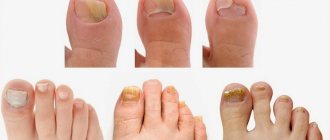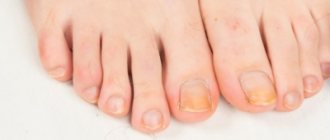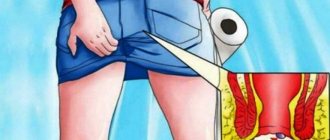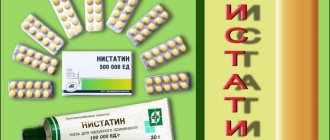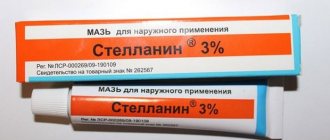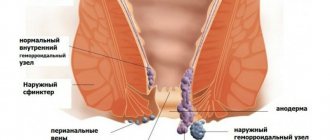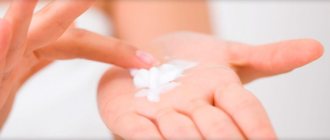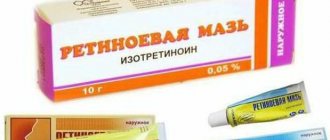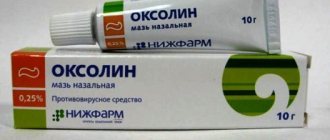To treat allergic skin diseases, doctors recommend using Lorinden ointment. The drug has a pronounced anti-inflammatory and antipruritic effect on the human body. The cream also helps fight secondary ailments caused by bacterial or fungal infections. The drug belongs to the group of combined medications, the therapeutic properties of which are determined by the components of the composition. The medication has antimicrobial activity and is used only for external (local) use.
Varieties of Lorinden
The ointment is available in two forms - A and C. Each of the varieties has its own pharmacological characteristics, but the drugs have similar medicinal effects. Lorinden C is a hormonal drug from the group of glucocorticoids, the drug is prescribed for the treatment of the following skin diseases: psoriasis, eczema, prurigo, dermatitis, urticaria, erythema. In addition, doctors recommend using the ointment in the treatment of dermatomycosis, impetigo and secondary infections that develop after insect bites.
Related articles Treatment of lichen in humans at home Corticosteroids for allergies Hormonal creams for dermatitis
The drug prevents the development of inflammation, successfully stopping the allergic reaction. Thanks to the active substances, the product has antipruritic, antiallergic, vasoconstrictor and decongestant effects. The ointment easily penetrates the stratum corneum of the skin without having a systemic effect. The process of absorption of components is influenced by several factors: frequency of use, zone and area of application. The ingredients of the cream are absorbed faster when applied to delicate areas of the skin, such as the face or armpits.
The same thing is observed when using the medication on the affected epidermis; sometimes an occlusive dressing causes a multiple acceleration of the penetration of active substances into the deep layers of the skin. According to medical research, the absorption of ointment in children occurs much faster than in adults. Lorinden C is metabolized in the liver and excreted from the body in bile or urine.
Lorinden A is a combination remedy that successfully fights allergic skin diseases. The drug has the following therapeutic properties: hypothermic, anti-inflammatory, keratolytic, decongestant. The ointment is used to treat neurodermatitis, ichthyosis, lichen planus, hyperkeratosis, discoid lupus. In addition, the medication is effective against many chronic skin ailments, which include: eczema, psoriasis, Vidal's lichen, dyshidrosis.
Lorinden A helps retain moisture on dry or oil-free areas of the skin without leaving visible marks on clothes and bedding. The ointment is quickly absorbed, excess is easily removed with a dry cloth. The thickness of the applied layer depends on the nature of the disease; the depth of penetration of the substance is small. Avoid contact of the substance with the conjunctiva or mucous membranes, as this may lead to side effects. It is not recommended to apply the product to the skin of the face or use it on large areas of the epidermis.
Lorinden composition
Both Lorinden ointments have a similar composition and almost identical medicinal properties, due to the presence of the same active ingredients. Flumethasone (flumethasone pivalate) is one of the main ingredients of the product, which is a synthetic glucocorticosteroid. Thanks to this substance, the anti-inflammatory effect of the drug is achieved. Flumethasone affects cellular elements, vascular components and mediators of the inflammatory process.
Due to such manipulations, a decrease in the activity of macrophages and fibroblasts is observed, which reduces the processes of granulation and infiltration. Flumethasone constricts blood vessels and inhibits the process of exudate release. The glucocorticosteroid stimulates the biosynthesis of lipocortins, which inhibit a special substance - phospholipase A2. The enzyme is an important component in the formation of microelements such as hydroxy acids, leukotrienes and prostanoids. Flumethasone inhibits the rate of chemical reactions of cellular kinins, thereby reducing the proteolytic activity of substances.
When used topically, a small amount of glucocorticosteroid enters the systemic circulation. The trace element is biotransformed through the work of the liver and is excreted from the body with bile or urine. A distinctive feature of Lorinden C ointment is the presence of such an active component as clioquinol. The antimicrobial substance has a wide spectrum of action, effective against yeast fungi, gram-positive bacteria and dermatophytes. Clioquinol prevents the development of inflammatory processes in the human body.
Lorinden A, in addition to flumethasone, includes another important ingredient - salicylic acid. The trace element belongs to the group of non-steroidal anti-inflammatory drugs and has antiseptic and keratolytic properties. This component suppresses the work of the sebaceous and sweat glands, ensuring unhindered penetration of flumethasone into the stratum corneum of the skin. Additional substances included in both ointments serve to form a fatty base of the drug, which softens and protects the skin from excess moisture. These include:
- propylene glycol;
- white Vaseline;
- anhydrous lanolin.
- white wax.
Indications for use of Lorinden A
The product is indicated for external use in patients suffering from inflammatory skin diseases. These ailments are often allergic in nature, so they are characterized by dry epidermis, hyperkeratosis or severe itching. The ointment is effective against diseases that respond to the effects of corticosteroids. The drug is powerless against secondary bacterial infections, which sometimes occur during complications of the disease. Lorinden A is used to combat:
- horny eczema;
- insect bites;
- diffuse neurodermatitis;
- exudative erythema;
- atopic dermatitis;
- discoid lupus erythematosus;
- hyperkeratosis;
- red verrucous verrucous;
- psoriasis;
- blistering skin diseases;
- chronic dyshidrosis;
- prurigo with lichenification;
- lichen planus;
- photodermatitis;
- seborrhea.
Main indications
There are the following indications for the use of Lorinden® C ointment:
- secondary infections caused by tick or mosquito bites;
- hives;
- discoid lupus erythematosus;
- lichen planus;
- dermatitis;
- neurodermatitis;
- erythroderma;
- erythema multiforme;
- old cases of psoriasis;
- eczema.
The use of ointment is also recommended for fungal and bacterial infections of the skin, in which local allergic reactions develop. Such pathologies include impetigo, blastomycosis and infected diaper rash.
Indications for use of Lorinden S
This type of ointment is distinguished by the presence of a special component – clioquinol. The substance successfully blocks the development of inflammatory processes and destroys most pathogenic bacteria and fungi. Lorinden C is used for the treatment of allergic dermatoses, but unlike the drug with salicylic acid, it effectively copes with complications of a bacterial or fungal nature. A complete list of diseases is indicated in the instructions; below is a list of the main indications:
- impetigo;
- eczema;
- dermatomycosis;
- erythema multiforme;
- infections from insect bites;
- sporotrichosis;
- hives;
- dermatitis that does not respond to standard therapy;
- infected diaper rash.
Instructions for use
The ointment is intended for topical use only. The course of treatment and frequency of use should be prescribed by a specialist. To treat skin ailments, the product is applied in a thin layer to the infected area of the skin 2-3 times a day. When tissue becomes keratinized, doctors recommend using an occlusive dressing, which must be changed once a day. The duration of treatment should not exceed two weeks. You should not use the medication on your face for more than a week. The maximum allowable amount of ointment that can be used in 7 days is 15 g.
During one day, it is allowed to apply no more than 2 g of the substance. During the course of therapy, it is recommended to regularly monitor the functioning of the adrenal cortex, since the hormone flumethasone can lead to a decrease in the level of cortisol in the blood. If the patient experiences a secondary infection, antifungal or antibacterial therapy is prescribed. In the absence of positive dynamics, it is recommended to resort to discontinuation or replacement of the drug.
Patients suffering from glaucoma or cataracts should be especially careful when applying the drug to the eyelids, as this may cause complications of the disease. The use of the medication on the skin of the face or in the groin area is carried out only when absolutely necessary. The use of an occlusive dressing is justified only in exceptional cases due to the risk of superinfection, epithelial atrophy or skin stretching. Patients with psoriasis should use Lorinden with caution, because the glucocorticosteroid can cause relapse.
Some components of the product, such as propylene glycol and lanolin, can lead to negative skin reactions (contact dermatitis). Therapy using glucocorticosteroids sometimes negatively affects the development and growth of children. It is not recommended to use the ointment for babies with a high body surface ratio, as there is a risk of unwanted systemic effects.
How the drug is used
In order to relieve negative reactions, which in some cases are provoked by Lorinden S, the instructions for use should be carefully studied. The description of the drug states that it is intended for external use.
Lorinden ointment is applied in a thin layer. Only affected areas need to be treated. The initial dosage is 2-3 times/24 hours. If positive dynamics are observed, then the dosage is reduced to 1-2 times/24 hours. The ointment should not be used for longer than 14 days.
If a bandage is intended to be worn, it should be made of materials that allow air to pass through. If the patient is indicated to wear an occlusive dressing, then the ointment is not used for longer than 7 days. The instructions also say that you should not use more than 2 g of product/24 hours.
Note! For children who have crossed the ten-year threshold, this remedy is prescribed in very rare cases. In this case, the medicine is applied to limited areas of the skin. Do not smear your face.
Contraindications to the use of Lorinden
Lorinden is rightfully considered one of the most effective antipruritic drugs. However, there is a group of patients who are not recommended to use the drug. According to the instructions, the ointment is contraindicated for children under two years of age. Children under 10 years of age are allowed to use the medication on a small area of skin once a day. People with intolerance or allergies to the components of this pharmacological product are prohibited from using the cream. The full list of contraindications is presented below:
- viral or fungal diseases;
- damage to large areas of skin;
- cutaneous tuberculosis;
- itching of the genitals;
- skin neoplasms;
- diaper dermatitis;
- precancerous skin conditions;
- ulceration of the legs due to varicose veins;
- perioral dermatitis;
- acne simplex or rosacea.
The drug should not be prescribed in the first trimester of pregnancy. There have been no medical studies aimed at studying the effect of flumetazole and salicylic acid on the condition of the fetus, so the use of ointment is justified only if absolutely necessary. It is still unknown whether the components of the drug are excreted in breast milk. Due to the lack of necessary data, the use of ointment during lactation should take place only on limited areas of the skin, avoiding the area of the mammary glands.
There were no signs of interaction of the ointment with other medicinal substances when applied topically. However, carrying out different types of immunization against the background of long-term therapy using an antiallergic drug can lead to the proliferation of antibodies. With prolonged use of the product over large areas of the skin, absorption of salicylic acid is often observed, which increases the effect of the following substances: antibiotics, Methotrexate, sulfonylurea derivatives. Lorinden reduces the effect of immunostimulants.
Side effects and contraindications
The use of ointment has a list of restrictions, which makes it an unacceptable means for use in a number of situations, namely:
- intolerance to individual components of the product;
- neoplasms on the skin, including pre-cancer ones;
- do not use acne medication;
- cutaneous tuberculosis;
- viral and fungal diseases (chickenpox, herpes);
- so-called “diaper” dermatitis;
- inflammation and itching in the genital area;
- extensive damage to the integument, for example, large burns;
- age up to 3 years;
- first trimester of pregnancy.
Side effects from the use of ointment can occur as a response to the presence of contraindications in the patient, as well as in case of violation of the regimen and duration of use of the product. Thus, the most likely reactions are: the appearance of a rash on the skin, active peeling, unpleasant sensations of itching and burning, excessive hair growth in the treated area or, on the contrary, hair loss, inflammation of the hair follicles, exacerbation of existing symptoms, etc.
Side effects
A long course of therapy using ointment can cause an overdose, the characteristic manifestations of which are the following symptoms: weakened immunity, increased blood pressure, swelling or hyperglycemia. In addition, complications such as muscle weakness, Cushing's syndrome, osteoporosis, and erosive lesions of the digestive tract may develop. To relieve negative effects, the frequency of use should be reduced or treatment should be temporarily stopped. Signs of side effects include:
- acne;
- aggravation of existing violations;
- post-steroid purpura;
- dysfunction of the hypothalamic-pituitary-adrenal system;
- inhibition of epidermal growth;
- maculopapular rash;
- atrophy of subcutaneous tissue;
- hives;
- dry skin;
- secondary infection;
- increased hair growth or hair loss;
- perioral dermatitis;
- burning, itching and skin irritation;
- furunculosis;
- depigmentation or skin pigmentation;
- telangiectasia;
- purulent inflammation of the hair follicle;
- atrophy and stretching of the skin.
Lorinden's analogs
If there is a need to replace Lorinden, you should definitely seek help from a specialist. Independent selection of an analogue can lead to serious complications, so the use of any external remedy should occur only after the approval of a doctor. The choice of a suitable drug is based on the form of the disease in which there is a need to use certain medications. The pharmacological market provides a wide range of products that have active ingredients similar to Lorinden:
- Prednisolone;
- Oxycort;
- Methylprenisolone;
- Akriderm;
- Diprospan;
- Betaderm;
- Dexamethasone;
- We see;
- Flumethasone.
Price for Lorinden
Antiallergic ointment is sold from pharmacies only with a doctor's prescription. The drug is considered one of the most affordable and effective means for treating skin diseases. The average price of the ointment is 500 rubles, which is an order of magnitude lower than most similar creams. The cost depends on the type of drug and the policy of creating markups among pharmacological companies in the Moscow region. You can purchase the ointment using the World Wide Web by pre-ordering Lorinden C or Lorinden A in the online store.
| Drug name | Manufacturer | Volume, g | Price, r |
| Lorinden S ointment | Elfa Farmzavod | 15 | 419 |
| 423 | |||
| 400 | |||
| 450 | |||
| 467 | |||
| Ointment Lorinden A | 555 | ||
| 542 | |||
| 567 | |||
| 548 | |||
| 550 |
Drug interactions
Due to the fact that Lorinden S has an immunosuppressive effect, immunization and vaccination should not be carried out during treatment.
The ointment should not be prescribed simultaneously with other external medications.
Flumethasone reduces the effectiveness of anticoagulants, antihypertensive and hypoglycemic drugs, reduces the concentration of praziquantel and salicylates in the blood serum.
In case of combined use, Lorinden C increases the risk of developing side effects of the following drugs: cardiac glycosides (digitalis intoxication); diuretics (hypokalemia); oral contraceptives, androgens, estrogens, anabolic steroids (hirsutism, acne); antipsychotics, azathioprine, bucarban (cataract); tricyclic antidepressants, antihistamines, nitrates, anticholinergics (glaucoma).
Reviews
Anastasia, 25 years old
My little sister developed shingles a few weeks ago, so we immediately took her to a private doctor. The specialist recommended that we buy Lorinden S, the ointment turned out to be really very effective. My sister used the drug for two weeks, rubbing the cream three times a day. The lichen completely disappeared after about 10 days.
Vera, 34 years old
During my student years, I often suffered from seborrhea. I was never able to completely heal, the spots returned after some time. One day, my roommate suggested that I try Lorinden because this ointment had helped her mother get rid of seborrhea completely. I completed a course of therapy, and since then the disease has not bothered me anymore!
Victor, 27 years old
I am a professional dermatologist and I want to note that this product is very popular for a reason. The ointment has a wide spectrum of action, due to which it successfully fights even secondary infections caused by bacteria or fungi. I often recommend this drug to my clients who have skin diseases.
Diana, 46 years old
For me, this remedy is a real godsend because it helped me cure dermatitis. I used the ointment twice a day for a month, the first results appeared after a week. My husband uses Lorinden when he has herpes, and my daughter uses the cream for psoriasis. The product is very affordable and economical, the tube lasts a long time!
"Terbinafine" against fungus. All release forms, instructions, reviews and price
Medical statistics indicate that mycoses are diagnosed in 1/5 of the Russian population. Special diligence is required to get rid of fungus on the nail plates and skin. If mycoses of the skin are cured on average in a couple of weeks, then it may take several months to completely replace the nail affected by the fungus. To guarantee 100% elimination of infection, doctors recommend the use of modern drugs, such as Terbinafine, whose action is aimed at destroying a wide range of pathogens.
Composition of the drug Terbinafine, description, release forms
The active ingredient in all forms of the drug is terbinafine hydrochloride, a substance formed from allylamine. It has a pronounced destructive effect on fungi by blocking the enzyme responsible for creating molecules required for the construction of cell membranes. The result of the process is the destruction of the parasite's cells and its death.
The active substance in the tablet form of the drug, after oral administration, is completely bound by blood proteins, delivering it to the tissues. In just an hour it will be half absorbed, and in four and a half hours it will reach the skin and nails.
The active substance is released from the body in the form of metabolic products formed as a result of the action of liver enzymes. Half of the dose taken is eliminated in 17 hours, and all the active substance accumulated in the tissues during the treatment period is eliminated in two weeks. Liver and kidney diseases significantly slow down the process of cleansing the body of the drug.
Terbinafine is prescribed to treat fungal diseases of the skin, including mucous membranes, nail plates, and skin under the scalp. Even a drop of the drug demonstrates a pronounced therapeutic effect. Medical practice confirms the harmful effects of this drug on the following types of fungi:
- Molds: e.g. Aspergillus, Cladosporium,
- Yeasts, including the genus Candida;
- Dermatophyte fungi and many dimorphic fungi.
Manufacturers took care of the ease of use of the composition and created a variety of its dosage forms. Depending on the location of the fungus and the stage of development of the disease, one or more suitable forms of the drug can be selected for treatment:
- Ointment 1% for application to the skin, white in color with a barely noticeable odor, sold in aluminum tubes of 15, 30 g, placed together with instructions in a cardboard package;
- Cream for nail fungus 1% for external use in aluminum tubes of 15, 30 g;
- Spray (1% solution) in glass bottles of 10 and 25 ml. Among the components, in addition to the active substance, it contains ethyl alcohol, water, macrogol 400 and propylene glycol. Can only be used externally;
- The tablets are round, white or with a yellowish tint, containing 125 mg or 250 mg of active substance, which accumulates well in the skin, nail plates, and hair, providing an antifungal effect. In pharmacies you can find the following trade names of the drug: Terbinafine, Terbinafine-Teva, Terbinafine-Sar, Terbinafine Hexal;
- Solution.
Therapeutic effect of Terbinafine, indications for use
Terbinafine is a third generation antimycotic. Its use in 90% of cases leads to a cure for fungal diseases. The drug receives the best reviews from patients who have used it to combat the following fungal diseases:
- Candidiasis of the skin and mucous membranes;
- Onychomycosis;
- Tinea versicolor;
- Microsporiasis;
- Trichophytosis (ringworm);
- Inguinal athlete's foot;
- Athlete's foot, hands.
The use of the drug is advisable not only for treatment, but also to prevent infection with a fungal infection, if the risk of this is high. For example, after contact with infected animals, plants, soil, after visiting public swimming pools, baths, saunas, it is recommended to treat the skin with Terbinafine, for example, in the form of a spray. The proliferation of fungi is facilitated by high humidity and heat, which occurs when wearing tight shoes made of airtight materials. That is why it is necessary to pay special attention to foot hygiene and the prevention of fungal infections on them.
Signs of mycosis that appear - itching, flaky skin on the feet or palms, yellowing and brittleness of nails - are a reason to contact a dermatologist as soon as possible. Based on the results of the tests, the required treatment regimen will be selected.
Instructions for use of Terbinafine cream and ointment
The drug, sold in the form of a cream and ointment, is suitable for external use only. It can be used to treat children from the age of twelve.
Mandatory actions prior to applying the drug are cleansing and drying the skin. Then you need to squeeze out 1 cm of the substance and spread it in a thin layer, lightly rubbing, over the area affected by the fungus, capturing the adjacent healthy skin. If necessary, you can apply a gauze bandage or napkin and secure it with an adhesive plaster. When treating skin in folds, for example, between the fingers, in the armpits, between the buttocks, in the genital area, under the mammary glands, it is necessary to apply a gauze bandage over the cream/ointment.
Therapy with these dosage forms usually takes 7–14 days. Dermatomycoses are treated once a day, and skin candidiasis and lichen versicolor will require twice the application of the composition during the day for two weeks. Nail fungus is treated for 1 to 3 months, depending on the individual characteristics of the patient’s body related to the growth of the nail plate. Additionally, feet are typically exposed to a warm, moist environment that encourages fungal growth, requiring longer treatment.
Instructions for use of Terbinafine tablets
The medication guide states the recommended daily dose of terbinafine tablets is 250 mg. It is recommended to take the daily dose at the same time. You can take 1 whole tablet every 24 hours or split it in half and take it twice a day, 12 hours apart. Children weighing up to 20 kg are given a quarter of a tablet, those weighing from 20 to 40 kg are given half a tablet. If the child’s weight exceeds 40 kg, he is prescribed an “adult” dose – one tablet per day. The medicine is taken without food intake, washed down with water.
Therapy using tablets lasts on average:
- 14 – 28 days when getting rid of dermatomycosis, candidiasis on the torso and limbs;
- up to one and a half months when getting rid of mycoses on the feet;
- up to a month when getting rid of mycoses of the scalp;
- up to 3 months when getting rid of onychomycosis. The duration of treatment depends on the rate of nail growth.
Instructions for use of Terbinafine spray and solution
The medicine in the form of a spray and solution is acceptable for external use. These are extremely convenient forms for treating large skin surfaces infected with fungus. Most often it is prescribed to cure:
- Fungus on the feet;
- Tinea versicolor;
- Mycosis in the groin;
- Mycotic infections on the skin of the trunk, arms and legs.
Before using liquid forms of the drug, the skin should be cleaned and dried. Then evenly distribute the liquid from the bottle until pronounced hydration is achieved. The manufacturer recommends once daily application of the drug for 1 - 2 weeks. Already in the first days of treatment, a therapeutic effect can be observed, and complete relief from the infection occurs after 3 to 5 weeks.
When treating a fungal infection, it is important to follow the recommended regimen and not skip taking the drug to prevent relapse of the disease. Advanced forms of the disease will require longer treatment.
Contraindications
For all forms of the drug, a contraindication is intolerance to any of its components. In addition, the use of Terbinafine should be avoided in the following cases:
- If the patient has not reached the age of 3 years and weighs 20 kg;
- During pregnancy and breastfeeding, as the substance can pass into milk;
- The presence of severe chronic diseases of the liver and kidneys;
- The presence of chronic metabolic diseases or other serious illnesses. In such situations, the necessary studies must be carried out to confirm the possibility of using the drug.
Related recommendations
To make treatment with such a potent drug as Terbinafine more effective, the following recommendations should be followed:
- To prevent a recurrence of the disease, disinfect shoes, clothing, personal hygiene items, bed linen, bathrooms and anything else where scales of infected epithelium may remain;
- Follow the medication regimen. Do not interrupt the course under any circumstances if you notice the disappearance of signs of mycosis. A repeated course of treatment may be longer, as the fungus will become resistant to this drug;
- Terbinafine is a liver-toxic drug, so liver function tests should be performed before prescribing it. A month after starting treatment, it is recommended to do a repeat test, and if the “liver tests” are elevated, treatment should be stopped;
- If you experience a persistent feeling of nausea, vomiting, loss of appetite, loss of strength, pain in the right hypochondrium, yellowing of the skin, light-colored feces and dark urine, you should immediately stop taking the medicine and consult a doctor to examine liver function;
- If dizziness occurs after taking the drug, the patient should avoid working with machinery and driving vehicles;
- During the period of taking terbinafine tablets, it is recommended to refrain from using other medications, in particular antidepressants and sedatives, drugs that neutralize adrenaline receptors of the blood vessels and heart;
- While taking the pills, refrain from drinking alcoholic beverages;
- If after 14 days of therapy no results appear, you must consult a doctor and re-test to identify the causative agent of the infection and its sensitivity to the drug.
Analogs
There are drugs containing an identical active ingredient - trebinafine hydrochloride. These are the following medicines:
- Atifin - in the form of tablets and cream;
- Binafin – in the form of tablets and cream;
- Lamisil - in the form of tablets, cream, nail polish, spray, solution for external use, gel;
- Lamican – in the form of tablets;
- Terbix - in the form of tablets, gel, ointment, cream, spray, solution;
- Fungoterbin - in the form of gel, cream, spray;
- Exifin - in the form of tablets, ointments, gels, sprays, solutions;
- Exiter – in the form of tablets and cream.
All these drugs can be equally effective if their manufacturing technology is followed. Since high-quality raw materials for production can be expensive, this is reflected in the cost of the medicine. That is, an extremely low price for a drug may indirectly indicate its low quality and, accordingly, the unpredictable result of therapy with its use.
Price of drugs
Any of the listed forms of the drug can be purchased at the pharmacy. Despite the fact that many manufacturers strongly recommend dispensing terbinafine tablets only with a prescription, due to their toxicity, very often they can be purchased without it. Ointment, cream, spray and solution are over-the-counter forms of the drug.
The cost of the medicine may vary depending on the manufacturer and the markup of a particular pharmacy. This is an inexpensive drug compared to analogues. On average, the following prices for the drug have been established:
- Tablets – 250 mg, 28 pieces in a cardboard package – 70 rubles; Terbinafine Canon – 250 mg, 14 pieces per package – 220 rubles; Terbinafine Teva – 250 mg, 28 pieces per package – 690 rubles; Terbinafine – MFF – 250 mg, 10 pieces per package – 150 rubles;
- Cream - for a tube of 15 g - 65-75 rubles; for a tube of 30 g – 150 rubles;
- Ointment - for a tube of 15 g - 80 rubles, Terbinafine - MFF - 77 rubles for 15 g;
- Spray 20 ml – 170 rubles.
Storage of the drug
To avoid poisoning of children, tablets should be placed in a place inaccessible to them, protected from direct sunlight at room temperature. It is advisable to keep cream, ointment, spray and other forms for external use in the refrigerator, preventing the drug from freezing.
It is necessary to keep the packaging with instructions and the date of manufacture of the medicine. Period from the date of manufacture during which the following can be used:
- Tablets – 3 years;
- Ointment, cream, spray – 2 years
Reviews
Maria, 52 years old
I’m very glad that there is a wonderful ointment for fungus, Terbinafine - MFF. I went to the doctor late about a fungus on my big toe - I didn’t notice the first signs, but it turns out that it had already settled on my feet a long time ago. They prescribed tablets and ointment. At the beginning of treatment, I took the drug for 10 days and applied the ointment daily for 1.5 months. The treatment took a long time, because the doctor recommended applying the ointment for another 10 days after the healthy nail grows in to consolidate the result. It’s good that my nails grow quickly - two small tubes were enough for me.
Irina, 28 years old
I encountered a fungus unexpectedly. I started visiting the pool regularly, and a month later mycosis appeared on the soles of my feet. I must say that I only wear my rubber slippers, but apparently the few steps I take barefoot played their fatal role.
I went to the dermatology office, they scraped me and carried out an analysis. Based on the results, a suitable drug was prescribed - terbinafine. I applied the cream to my skin before going to bed every day. After 3 weeks the fungus disappeared.
Peter, 44 years old
A good remedy for breaking toenails. In recent years, my toenails have begun to crumble during circumcision. I didn’t attach any importance to it, and then I found out that it was onychomycosis. I began to study information about the disease and methods of treatment. I prescribed Terbinafine to myself. A normal, albeit cheap, drug. I drank a pack of tablets and treated all my nails with ointment every day after washing. It took three and a half months for new healthy nails to grow. By the way, the advertised Lamisil contains the same active ingredient, but costs several times more. So I think that my research helped save money, because pharmacies always offer the most expensive drugs.

